
There's one thing the food giants hate.
Which ? Let YOU choose the foods you eat.
Why ? Because these companies have warehouses full of questionable products that they want to get rid of.
You will quickly understand.
It is precisely with these dubious products that they hope to feed us well!

And don't be fooled!
It is certainly not the ingredient labels on the packaging, nor the consumer protection laws, which are going to prevent them from making you swallow these dangerous products.
Prepare to be outraged, because here are the 3 most appalling lies in the food industry. Watch:
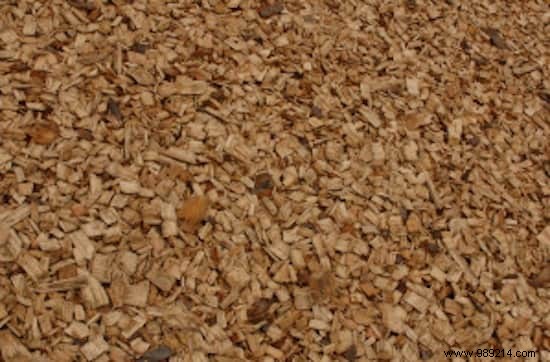
You know what's really great? It's newsprint.
Or more precisely, the decline of newsprint . With all the news available for free on our smartphones, the sale of paper newspapers keeps falling.
And since there are fewer and fewer newspapers, have you ever wondered what we do with all the surplus pulp, this product derived from wood?
And there you are saying to yourself:
"But what is the relationship between paper pulp and the ingredients used in the food industry?".
Yes Yes. You understood well. We are really taken for morons.
The answer:look at the ingredients of your pizza crusts, industrial pastries and breads, bagels, etc.
Yes, friends... we eat WOOD!

Want to know what we do with all that good paper pulp?
It's simple, the giants of the food industry have renamed it "cellulose" and they feed you with it, that's what we do with it!
Everyone uses cellulose, take a good look at the ingredients on the labels. It also sometimes hides behind its small name "E466":
In fact, cellulose improves the texture of processed foods.
As a result, the food giants are having a field day. They are happy to use cellulose, and more cellulose.
Indeed, for them, it is the perfect ingredient to replace old and cheesy ingredients, such as flour and vegetable oil.
This makes sense, given that the price of cellulose is 30% cheaper than the ingredients it replaces.
In addition, cellulose is considered edible and non-toxic.
The European Union has little interest in limiting its use or, for that matter, in limiting the maximum quantity used by the food industry.
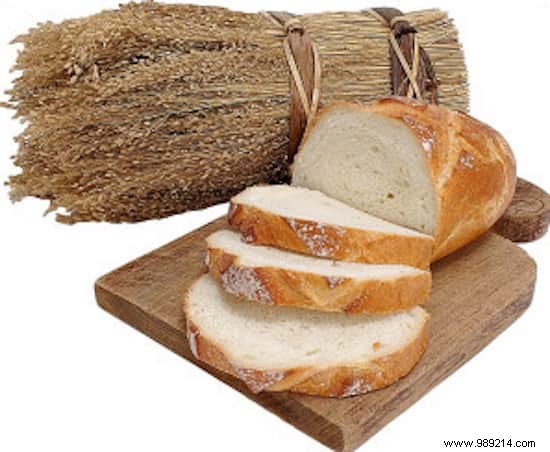
Cellulose is found everywhere. Even organic food is not spared — after all, cellulose comes from trees, which by definition makes cellulose a bit organic, right?
But the worst thing is not that cellulose is found in almost all foods. The worst part is that cellulose is NOT really a food !
Indeed, cellulose, unlike the "normal" foods you are used to buying, is simply not digested by humans .
It literally has NO nutritional value for the organism.

For example, this bread and this cutting board above have almost the same WOOD content.
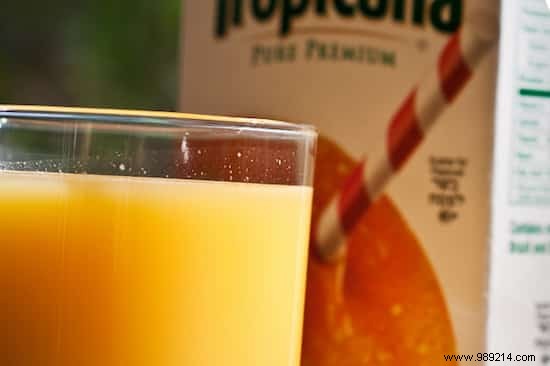
What do you think is the healthiest drink that you can easily find in almost any store?
Your answer is likely to be orange juice .
Indeed, when you are sick, many people have the reflex to buy orange juice. It's almost as if this juice is considered medicine.
Normal, orange juice packaging is stuffed with garish slogans to highlight their so-called health benefits:"100% natural!", "Pure Orange Juice!", "No Added Sugar!", etc.
And why not believe them? Because frankly, making orange juice is not like making Shepherd's Pie from Spanghero.
We take a few oranges, squeeze them and pour the result into a cardboard package, with or without pulp.
There you go, no more complicated! You can drink your delicious orange juice now.
Except...did you know that this delicious so-called "freshly squeezed" orange juice can actually be over a year old ?
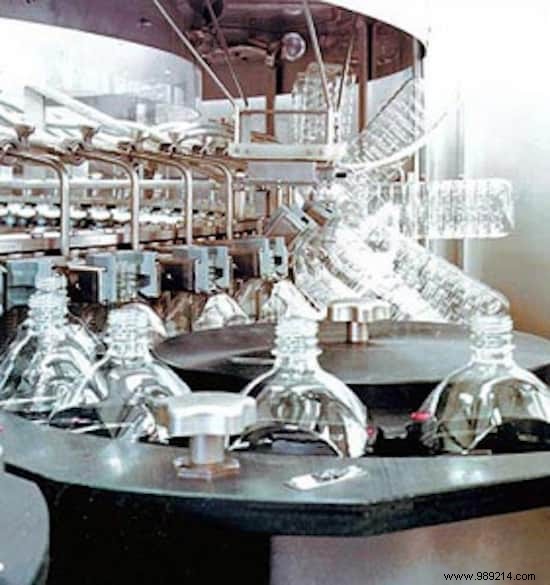
And did you know that this orange juice has also been subjected to transformations that would make anyone vomit?
Above, bottling in an orange juice factory. Here, strange, there is nothing orange!
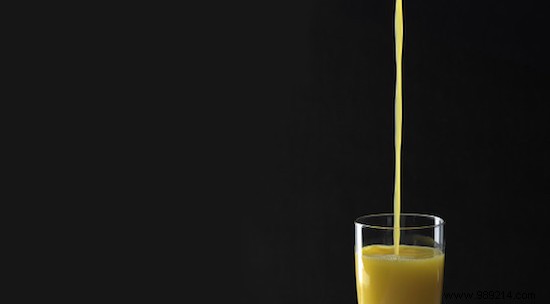
You've never wondered how manufacturers manage to make their "natural" orange juices, so good for your health and 100% pure juice, ALL taste exactly the same ?
Regardless of the brand, all orange juice tastes almost the same, despite the "fact" that it does not contain additives or preservatives.
Indeed, the first step in making orange juice is to squeeze the oranges. But this is the only normal step in the whole process of manufacturing industrial orange juice.
Once squeezed, the orange juice is immediately stored in huge tanks. Then the giants of the industry remove all the oxygen that the juice contains.
Thanks to this extraction, they can preserve the orange juice without it degrading for 1 year .
That's how they can distribute and sell it worldwide all year round — even when the oranges are out of season.
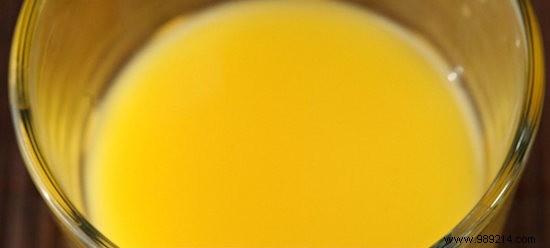
There you go, thank you science! Thanks to you, we can enjoy delicious "freshly squeezed" orange juice all year round.
But there is still a very small problem (from the manufacturer's point of view, of course).
The problem is that when you remove the oxygen from the orange juice, you also remove all the taste of the orange juice !
Ouch. This means that manufacturers end up with huge tanks filled with a liquid that can be kept for 1 year...
...except that this liquid is really just water whose color is orange and taste rather close to that of paper!
So, what is the ingenious solution of all these poor manufacturers?
No problem ! They bring flavor to orange juice with flavor packs , clever mixtures of chemicals.
And of course, these flavor packs are made by others industry giants — you know, the ones that make the perfume on your bathroom shelf.
And There you go ! Now the makers can sell you their delicious water that is orange in color and tastes like paper. Yum!
Plus, thanks to a loophole in most countries' laws, manufacturers aren't even required to include the chemicals that go into flavor packs on the ingredient list.
Do you hear that little rattle in your kitchen? Must be your zombie orange juice in the fridge.
Pay attention, because now he knows you know his dirty secret.
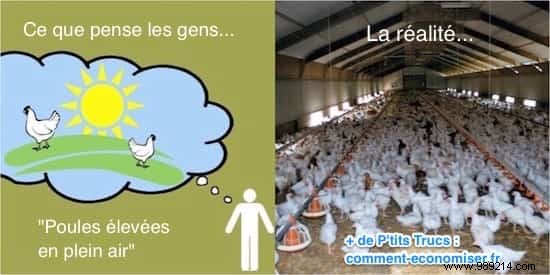
When you buy eggs from free-range hens, you immediately have the impression of being a consumer respectful of our animal friends.
Plus, it's so easy. They are sold right next to "normal" eggs.
You know, the ones that are produced in staggering quantities in atrocious chicken farms/prisons.
By choosing eggs from free range hens, you tell yourself that you avoid all this cruelty for just a few cents more!
Really, it's a small price paid to have peace of mind. On closer inspection, there's literally no reason to NOT buy eggs from "free-range" hens.
By the way, what exactly do "free range" and "free range" mean?
In any case, it seems to be really respectful of our animal friends! You know what ? One should also only buy "free-range" meat and poultry!
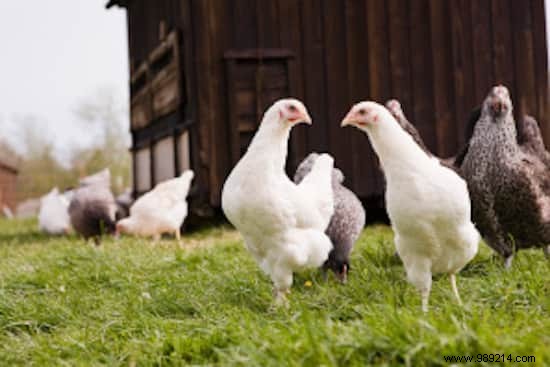
Well in fact, according to the definition of the legislation, the designation "raised in the open air" applies only to hens raised for their meat and which have "outside access".
Alright… that's a little less dreamy than "free range hens". And presumably that only applies to hens raised for meat.
But at least these brave hens have a bit of freedom, since they can go peck outside whenever they want. No?
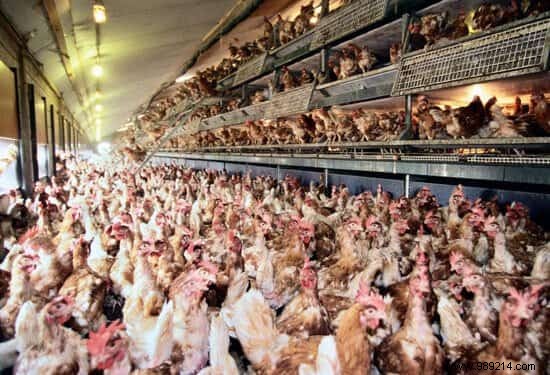
Never underestimate the power of words.
Basically, "free-range" meant the hens were raised in a barrier-free, cage-free environment.
These words conjure up a powerful image in our heads.
We immediately imagine free hens, so free that they freely ride the great fertile plains of freedom on free mini-horses.
They also wear mini Phrygian caps. And all along their way to freedom, they lay their delicious free-range eggs for us.
For the soundtrack, we imagined a mandolin and a harmonica.
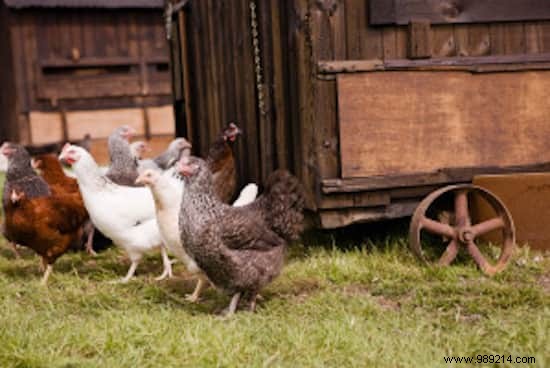
Except that in reality, there are absolutely no regulations on the use of the terms "free-range" and "free-range" for hens that are not raised for their meat .
An example. Basically, the law has nothing against you if you decide to put a "free-range raised" on Snickers packaging.
However, be sure and certain that the giants of the industry are well aware of this loophole in the legislation.
And they're taking full advantage of it to ride the wave of free-range meat and poultry.
In reality, eggs from "free-range" hens come from hens that live in almost the same kind of prison as other hens.
Except that instead of evolving in a cell of this prison, they are all piled up in the changing rooms.
This is what "free-range hens" really look like:
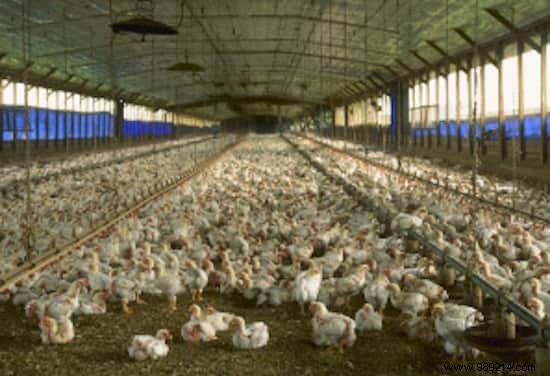
Fortunately, there is growing awareness of the free range lie.
Sometimes, an industrialist who has pushed a little too much ends up going to prison. But overall, the phenomenon continues.
In reality, there are little differences between eggs from hens raised in cages, on the ground, or free-range.
On the other hand, chickens from organic farming can really go outside.
They benefit from shelter and vegetation on the outdoor course. And inside the shed, the number of hens is limited.
Finally, they benefit from organic food, at least 90%. Hence the price difference between "free-range" eggs and organic eggs.
Now you at least know why you are paying such a price difference!
And if you want eggs from REALLY free-range hens, the best thing is to have your own laying hens at home. Read our article here to learn more :-)